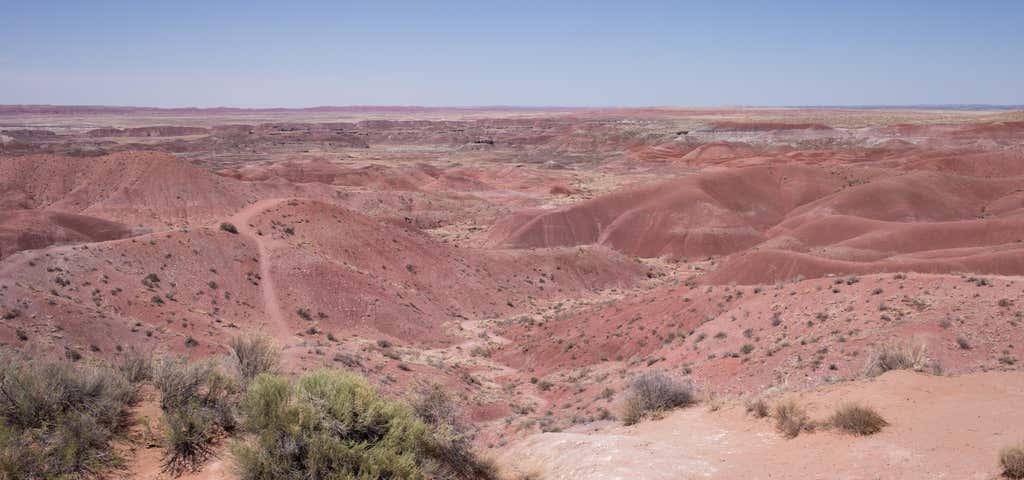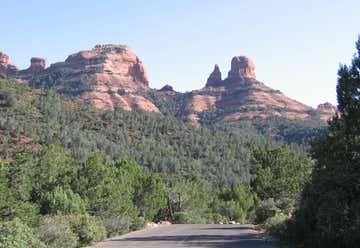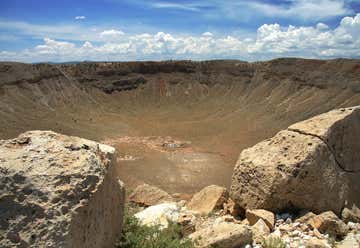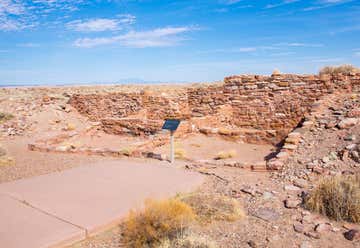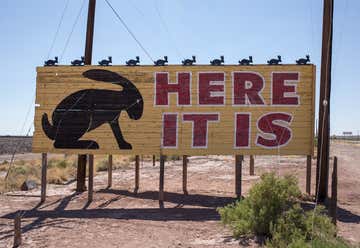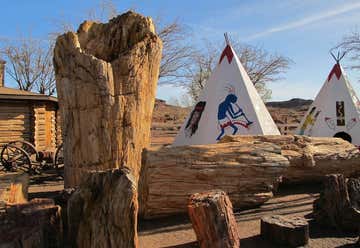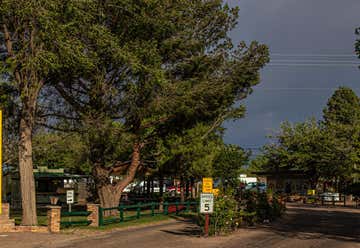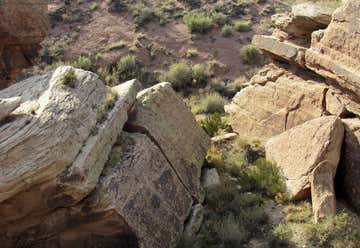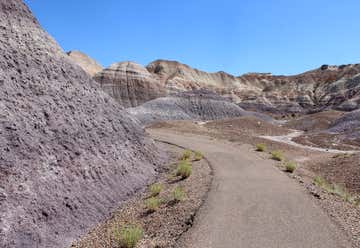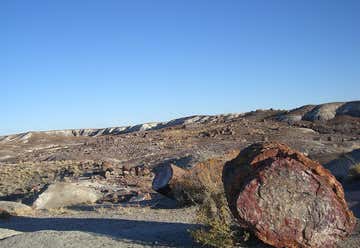Today, the New Mexico section of Route 66 clocks in at just over 250 miles of remaining road, but that wasn't always the case. The original alignment, mapped out in 1926, covered more than 500 miles through the Land of Enchantment and included an S-shaped detour in the middle of the state. When the New Mexico portion of the route was redrawn in 1937, more than 100 miles were knocked off.
This KOA has standard RV and tenting accommodations, but also teepees and deluxe cabins. The scenic campground is full of ponderosa pines, and is located less than an hour from the Red Rocks of Sedona.
Sedona’s Oak Creek Canyon Scenic Drive is a little slice of desert paradise filled with churches, hiking trails, jewelry, and more. Make a quick stop at the Oak Creek Canyon Vista. Here, you can soak up the views of Sedona and browse Native American jewelry and crafts. The Airport Mesa hiking trail offers more than just breathtaking views of red rocks, stately pines, and majestic mesas—you'll also get to visit a vortex.
Sedona is known for being home to more than one site of swirling energy said to have an effect on a person's mental or spiritual self. People who come to Sedona to visit one of four vortexes usually spend time meditating, praying, or reflecting at the sites. Whether you're a staunch believer in the power of an energy vortex, or just a curious observer, these are definitely worth a visit.
After you've been re-energized—by the vortex or the scenery—check out the Chapel of the Holy Cross for a more traditional spiritual experience. This Catholic church was built right into a rocky mesa by a local rancher and artist so people of all religions and creeds could have a place to reflect on Sedona's beauty. And if you're feeling extra inspired, you won't be surprised to learn that it is also built on the alleged site of another Sedona vortex.
Sedona is one of those places you just have to experience in person—even the most spectacular photos don't fully do it justice. Surrounded by majestic red rock canyons and pine forests, this small desert town is known for its vibrant art scene and mysterious healing forces. Yes, you read that right—Sedona is supposedly a hotbed of cosmic activity, sitting atop several energy vortexes that are easily accessible through hikes and tours. With its artsy vibe and comfortable climate, Sedona is also home to cute shops and restaurants, galleries, and lots of aging hippies.
Just outside of Flagstaff is one of the weirdest attractions in the West: Meteor Crater. The impact crater formed when a meteor hit Earth about 50,000 years ago and left a massive, almost mile-wide hole in the ground. The visitor center features a museum, videos, and a great observation deck.
Thanks to Standin' on the Corner Park, Winslow, Arizona, is back on the map as tourists once again travel through the heart of town. The park features a couple of statues and a mural of a girl in a red Ford truck, with the flatbed perpetually parked across the street. But this perfect photo op is only the beginning of what Winslow has to offer.
Homolovi State Park is home to 13th- and 14th-century artifacts and ruins. The park offers year-round petroglyph tours, a museum, and trails leading to the beautiful ruins. There is also overnight camping with electricity, water, and clean showering facilities. Homolovi is the closest campground to Petrified Forest National Park.
We don’t know for sure that this is actually the world’s largest petrified tree, but it is definitely big, reportedly weighing 80 tons. Stop for a photo, do a little climbing, and then it’s on to the next stop.
Holbrook, Arizona, United States
Holbrook is a town that’s defied extinction, in more ways than one. It’s one of the rare Route 66 towns that managed to scrape by after the Mother Road was decommissioned. Holbrook is steeped in retro vibes and remains filled with “touristy” kitsch; its proximity to Petrified Forest National Park hasn’t hurt its popularity. Whether you’re trying to find the best deal on gemstones and souvenirs—or you’re in search of as many dinosaur statues as possible—Holbrook is worth exploring. It also happens to be home to the iconic Wigwam Village Motel #6, so you can spend the night and grab a breakfast burrito smothered in red or green chile from Joe and Aggie’s Cafe in the morning.
This is a great base camp for exploring the Painted Desert and Petrified Forest National Park. It’s also just an hour west of Meteor Crater. The campground offers full hookup RV sites, tent sites, and cabins.
For a park that's less than 150 square miles in size, it's pretty impressive that more than 600 archaeological sites have been found within Petrified Forest's boundaries. The cryptic petroglyphs on Newspaper Rock were carved between 650 and 2,000 years ago. Visit and try to decipher their meaning yourself.
The 1-mile Blue Mesa trail takes you further into the Painted Desert, where the hills take on hues of gray, purple, and blue. It's definitely not a typical desert landscape—seriously, it looks like you're on a different planet—which makes it well worth a visit.
The Crystal Forest is an easy hike along a paved walkway. The loop, named for the quartz crystals sometimes found in the wood, takes you past piles of petrified wood. It's only three-quarters of a mile, but take your time and enjoy the views.
The eight-room Agate House was likely built between the years 1050 and 1300, and was reconstructed in the 1930s. It was built using petrified wood and is still in remarkably good condition. See it for yourself by hiking the 2-mile round trip trail from the Rainbow Forest visitor center.
Watching educational videos and looking at displays is a good way to get background on the petrified wood, but nothing beats seeing the actual thing up close. It’s a surprising experience to see so many sparkly, colorful logs in one place, and it’s hard to believe that these trees are 220 million years old.
Inside the national park, tour the Rainbow Forest Museum featuring hands-on exhibits and displays. Behind the museum is one of Petrified Forest's best hikes, the Giant Logs Trail. If you're limited on time and looking to get as much out of the park as possible, this is a great place to start.
For the best views—and to see how the Painted Desert got its name—head to Kachina Point. Bands of different colored sediment in the rolling hills make for a perfect photo op.
The Painted Desert Visitor Center is a good first stop on your tour of the park. It has an educational film, a gift shop, and plenty of petrified wood for sale.
A forest in the middle of Arizona’s grassland may sound odd, but Petrified Forest National Park is unlike any other forest in the country. The park is packed with gems—quite literally, since the ancient wood has been turned into sparkly stone—that anyone, from the outdoor enthusiast to the science geek, can enjoy.
The park’s location right off the highway means that many people at least drive through it (though it closes as early as 5 p.m., so plan accordingly). A portion of old Route 66 is located within the park—the only portion of the classic road to still be preserved within a national park (the asphalt is gone so it’s not driveable, but look for the old telephone poles marking the route). Wilderness camping is available within the park. Homolovi State Park, about an hour away, also offers camping options. Nearby in Holbrook, Arizona, are additional accommodation and camping options, including a KOA.
Don't let the glittering logs temp you into snagging a souvenir—removing any petrified wood from the park is illegal. You can purchase a box of petrified wood from a gift store (sourced from private lands), but don’t open it until you’ve left the park premises.
Summers in the park can get hot, with little to offer in the way of shade, and winters are often cold and snowy. Wildflowers pop up throughout the desert between March and October, especially in May, July, and August, so if you're looking for an extra colorful landscape, this is a good time to visit.
The Allentown Bridge, located in Apache County, is a great photo op. Built in 1923, the bridge crosses the Puerco River and is on the National Register of Historic Places. While you’re in the neighborhood, the Querino Canyon Bridge on old Route 66, just a few miles away, is another stunner.
There’s only one more section of the Mother Road left to complete—and while we don’t want to play favorites and say we saved the best for last, there are still plenty of roadside gems left to see. This is the home stretch, so slow down, take that detour, and savor every last bit of this epic Route 66 journey before you hit the “End” sign on Santa Monica Pier.
Banner Photo Credit: Roadtrippers
